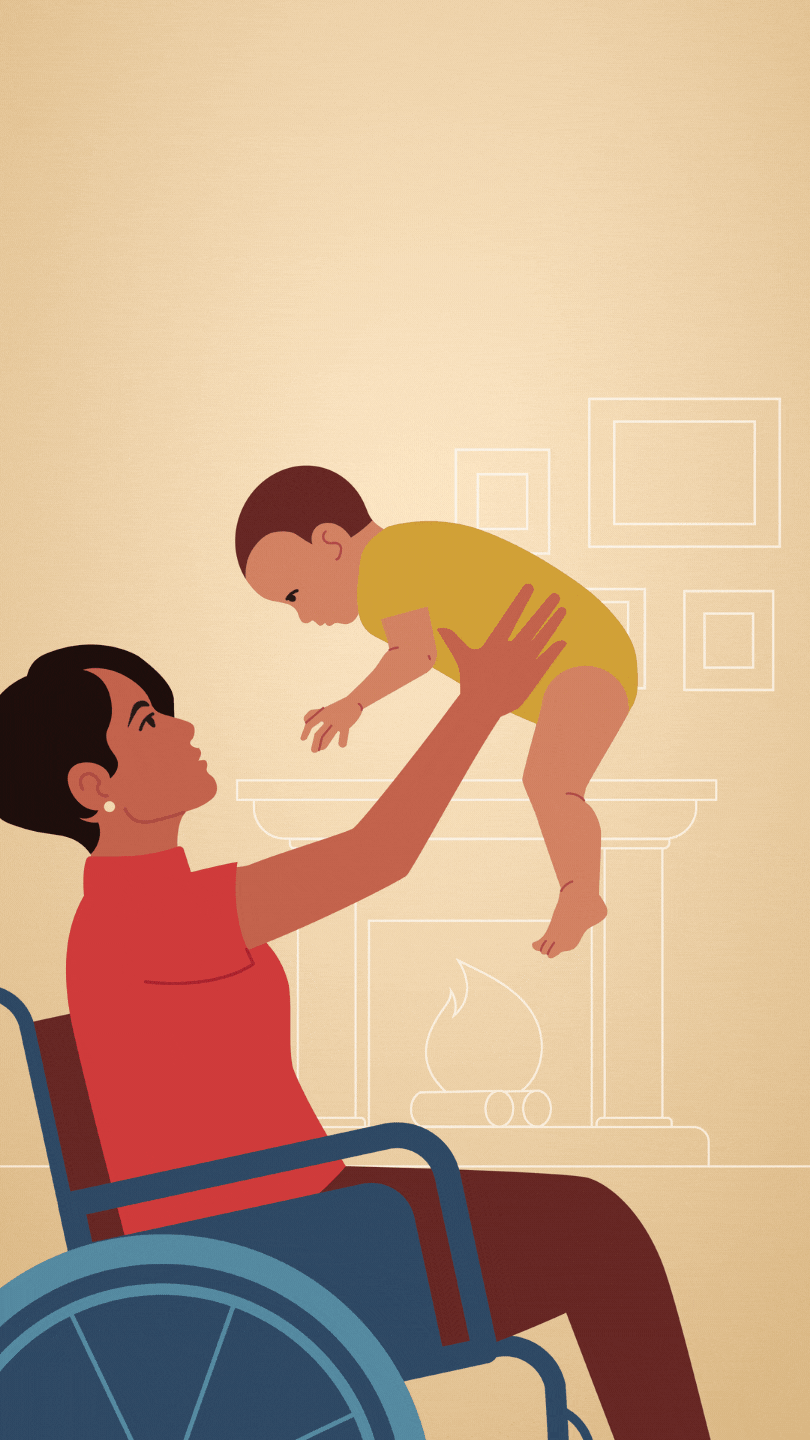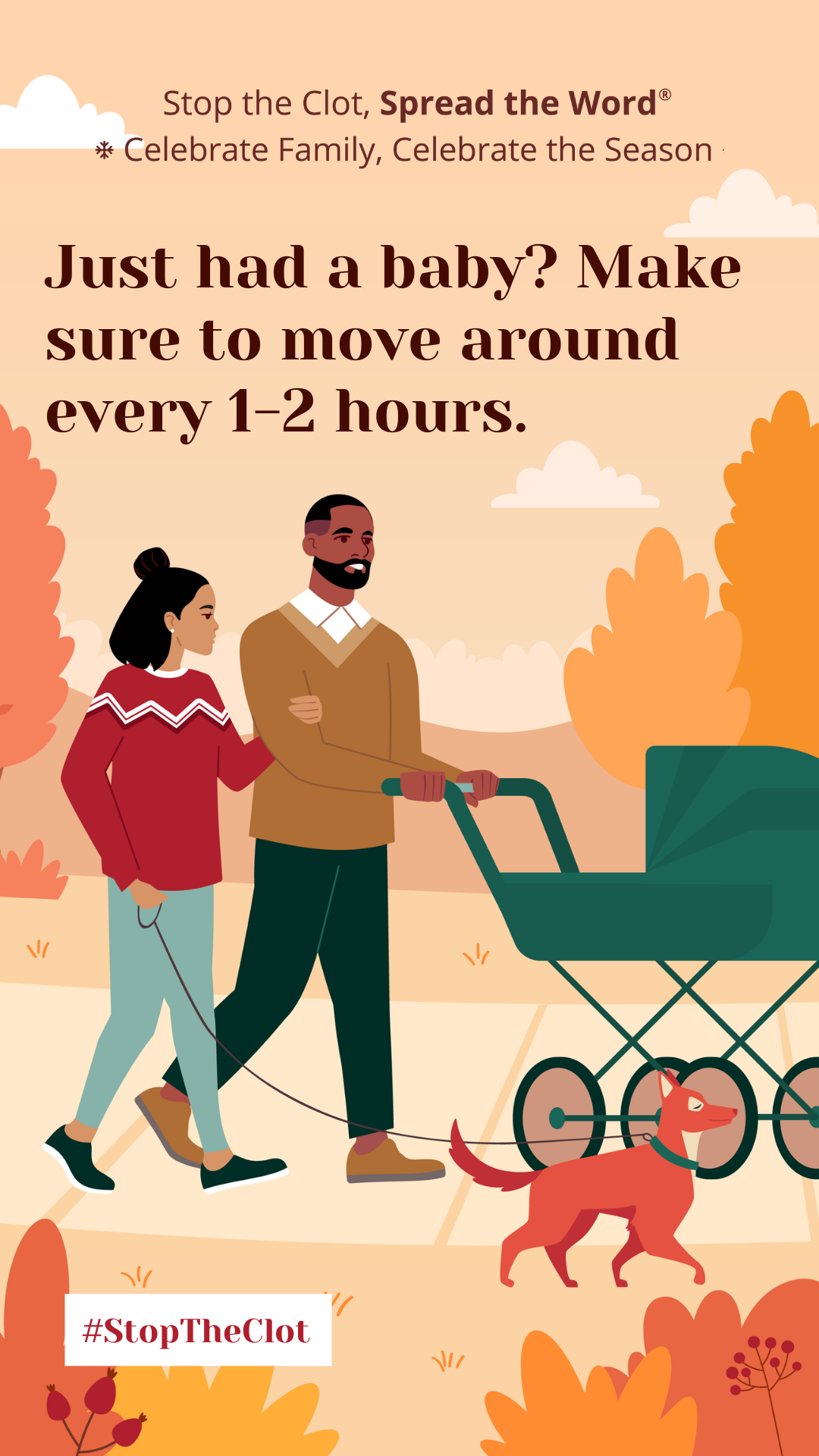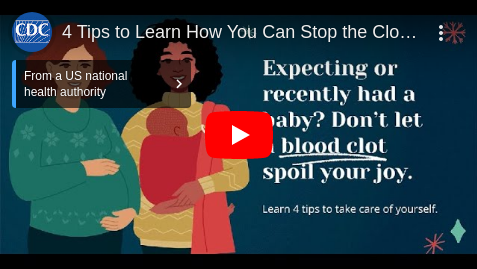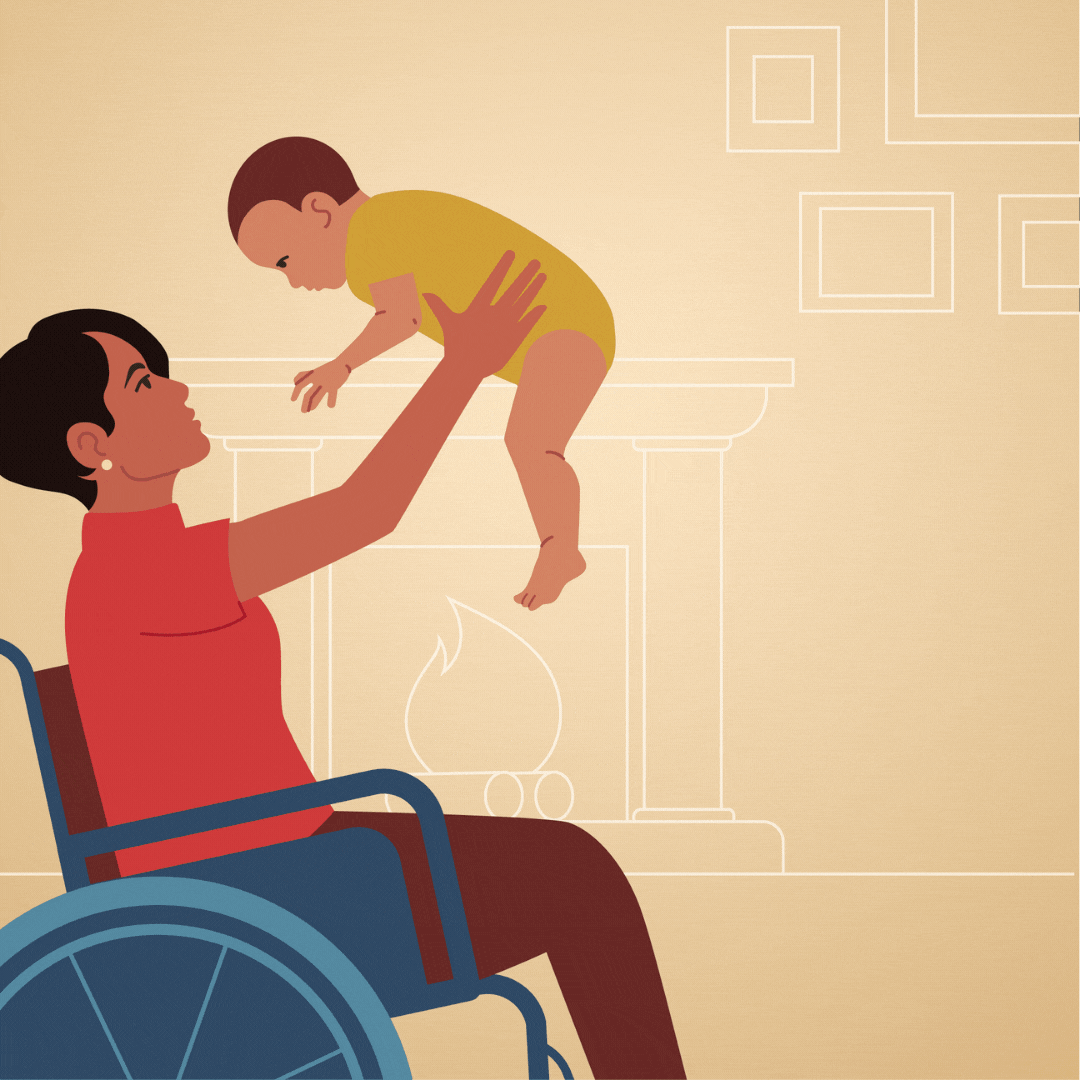Blood Clots and Pregnancy – Partner Toolkit

The Stop the Clot, Spread the Word® campaign, a joint effort of the National Blood Clot Alliance and the Centers for Disease Control and Prevention, is a multi-tiered public health education campaign designed to raise awareness about blood clots for the general public and various high-risk groups. This year, the campaign is aiming a spotlight on the risks of blood clots among expectant and new moms.
Did you know that women are five times more likely to experience a blood clot during pregnancy and the three-month period after giving birth?
This holiday season, join us in raising awareness about preventing pregnancy-related blood clots! Use this toolkit to share messaging about pregnancy-related blood clots with expectant and new moms.
Together, we can make a difference in the health of pregnant woman and new moms.
- Learn more about pregnancy-related blood clots
- Learn more about the signs and symptoms of blood clots
- Learn more about the risk factors of blood clots
Use the sample messaging and visuals below to spread the word through social media, blogs, and more!
Sample Messaging & Graphics
Sample Social Media Posts
This holiday season, join us in spreading the word to prevent blood clots among pregnant women and new moms. Check out these 4 tips to learn how you can stop the clot, spread the word, and celebrate the season. https://bit.ly/3DosFX2
#StoptheClot
#Pregnant
#NewMom
#BloodClot
Attention new moms! You can prevent a potentially dangerous blood clot by knowing your risks and being prepared. Talk to your healthcare provider and learn the symptoms of a blood clot. https://bit.ly/3DosFX2
#StoptheClot
#Pregnant
#NewMom
#BloodClot
Expecting and new moms have an increased risk of developing blood clots. Don’t let a blood clot spoil your joy this holiday season. Learn your family’s health history to see if you may be at risk. https://bit.ly/3DosFX2
#StoptheClot
#Pregnant
#NewMom
#BloodClot

Expecting or recently had a baby? Tis the season to protect your health! Sitting for long periods of time can increase your risk for a blood clot. Be sure to move your legs and arms frequently to help with blood flow. https://bit.ly/3DosFX2
#StoptheClot
#Pregnant
#NewMom
#BloodClot

DYK? Women are five times more likely to experience a blood clot during pregnancy and the three-month period after giving birth. Take care of yourself this holiday season by learning the signs of a dangerous blood clot. https://bit.ly/3DosFX2
#StoptheClot
#Pregnant
#NewMom
#BloodClot
Social Media Stories

Add hashtags:
#StoptheClot
#Pregnant
#NewMom
#BloodClot
Tag @CDCgov
Add a swipe-up link:
https://bit.ly/3DosFX2

Add hashtags:
#StoptheClot
#Pregnant
#NewMom
#BloodClot
Tag @CDCgov
Add a swipe-up link:
https://bit.ly/3DosFX2

Add hashtags:
#StoptheClot
#Pregnant
#NewMom
#BloodClot
Tag @CDCgov
Add a swipe-up link:
https://bit.ly/3DosFX2

Add hashtags:
#StoptheClot
#Pregnant
#NewMom
#BloodClot
Tag @CDCgov
Add a swipe-up link:
https://bit.ly/3DosFX2




